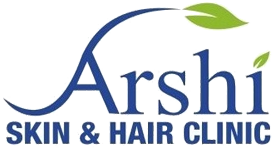Call Us - 040 - 48 55 55 55
- Home
- About
- Treatments
- Skin Treatments
- Hair Treatments
- Surgical Treatments
- Anti Aging Treatments
- Lip Fillers
- Fillers for Tear Trough
- Gummy Smile Correction
- Neck Lines Correction
- Nefertiti Lift Treatment
- Signature Anti Ageing Treatment with Skin Boosters
- Non Surgical Rhinoplasty
- Non Surgical Chin Correction
- Non Surgical Double Chin Correction
- Non Surgical Cheeks Enhancement
- Non Surgical Skin Tightening
- Non Surgical Eye Brow Lift
- Cosmetic Treatments
- Children Drematology
- Packages
- Gallery
- Blog
- Contact
Keloids Treatment in Hyderabad
Keloids are raised scars that develop when the body produces excess collagen in response to an injury. They often appear as raised, thickened areas of skin that are darker or lighter than the surrounding skin. Keloids can be unsightly and uncomfortable, and can also cause itching or pain.
Types of Keloids: Keloids can occur anywhere on the body, but are most common on the chest, back, shoulders, and earlobes. There are several types of keloids:
- Papular Keloids.
- Nodular Keloids.
- Tumoral Keloids.
- Pedunculated Keloids.
- Hyper-inflammatory Keloids.
- Superficially Spreading Keloids.
- Iatrogenic Keloids.
Causes of Keloids: Keloids can occur after any type of skin injury, including surgery, burns, acne, and piercings. Some people are more prone to keloids than others, and the condition tends to run in families. Keloids are more common in people with darker skin tones, and can also occur as a result of hormonal changes during pregnancy or adolescence.
Pathophysiology of Keloids: Keloids develop when the body produces too much collagen in response to an injury. Collagen is a protein that forms the structure of skin and other connective tissues in the body. When the body produces too much collagen, it can cause the skin to thicken and form raised, thickened areas.
Treatment options for Keloids: There are several treatment options for keloids, but there is no one-size-fits-all solution. Some common treatment options include:
- Corticosteroid Injections: Corticosteroid injections can help reduce the size and thickness of keloids by reducing inflammation in the affected area.
- Surgery: Surgery can be used to remove keloids, but there is a risk that the keloid will return after surgery.
- Cryotherapy: Cryotherapy involves freezing the keloid with liquid nitrogen, which can help reduce its size and thickness.
- Laser Therapy: Laser therapy can be used to reduce the size and thickness of keloids by targeting the blood vessels that supply them with blood.
- Silicone Sheets: Silicone sheets can be applied to the surface of keloids to help flatten and reduce their size over time.
- Pressure Therapy: Pressure therapy involves applying pressure to the keloid with a special dressing or bandage, which can help reduce its size and thickness.
In conclusion, keloids are raised scars that can be unsightly and uncomfortable. They can occur after any type of skin injury, and tend to be more common in people with darker skin tones. Treatment options for keloids include corticosteroid injections, surgery, cryotherapy, laser therapy, silicone sheets, and pressure therapy.
Frequently Asked Questions
Is it possible to reverse aging?
ILS injections are a type of intralesional steroid injection used to treat keloids. They involve injecting a steroid medication directly into the keloid to reduce inflammation and promote healing.
How do ILS injections work?
The steroids in the injection help to reduce inflammation and limit the growth of abnormal cells, which can help to shrink the keloid and reduce its appearance.
Are ILS injections painful?
The injection itself may cause some mild discomfort, but most people tolerate the procedure well. Your doctor may apply a topical anesthetic or ice pack to numb the area before the injection.
How many ILS injections are needed for keloid treatment?
The number of injections needed can vary depending on the size and severity of the keloid. Your doctor will work with you to develop a treatment plan tailored to your individual needs.
How often do I need to get ILS injections for keloids?
The frequency of injections can vary, but most people receive injections every 4-6 weeks until the keloid has improved.
Are there any side effects of ILS injections?
Possible side effects include temporary pain or discomfort at the injection site, skin discoloration, and thinning of the skin.
Can ILS injections be used for all types of keloids?
ILS injections are most effective for treating small to moderate-sized keloids. Large or severe keloids may require additional treatments or surgery.
How long does it take for ILS injections to work?
It may take several weeks or months to see significant improvement, and multiple injections may be needed over time.
Are there any precautions I should take after receiving ILS injections?
Your doctor may recommend avoiding certain activities or applying pressure to the injection site for a period of time after the procedure to allow the medication to work effectively.
Can ILS injections completely remove keloids?
While ILS injections can help to shrink and improve the appearance of keloids, they may not completely remove them. In some cases, additional treatments such as surgery or laser therapy may be needed to achieve optimal results.
Why ARSHI SKIN AND HAIR CLINICS?
At our clinics, we offer comprehensive keloid treatment services to help patients get relief from keloids. Our team of experienced professionals is highly skilled in treating keloids using a variety of techniques, including steroid injections, cryotherapy, laser therapy, and surgical excision. We take a personalized approach to each patient, assessing their unique needs and developing a treatment plan that is safe, effective, and tailored to their individual needs. We understand the physical and emotional toll that keloids can take on a person, and we’re committed to helping our patients achieve the best possible outcome. If you’re looking for top-notch keloid treatment services, we invite you to visit our clinic and discover why we’re the best choice for your skin care needs.

